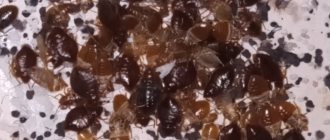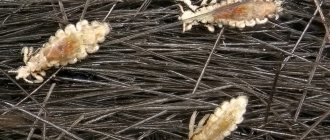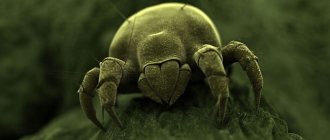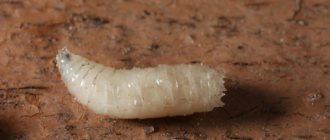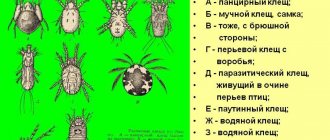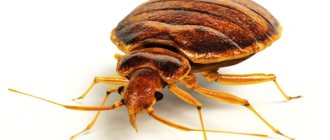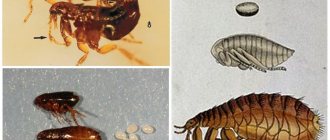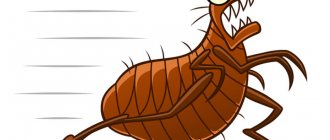How long do fleas live in an apartment, how many days do they die after treatment, why do they not die even when the animals are no longer in the house - the answers to these questions lie in the biology of the parasites.
How long a flea can live without feeding on blood outside an animal depends on environmental conditions and the stage of the insect's life cycle. First, let's establish how many years, months or days earth fleas can live in different circumstances - favorable and extreme.
How long do fleas live in artificial conditions?
In the laboratory
In laboratory conditions, adult cat fleas live for months. In one artificial system, the maximum lifespan was 86 days. In another experiment, when fleas were fed human blood, their lifespan reached 139-185 days!
On an animal
The flea lives on the body of the owner for a long time, provided that the animal does not take care of itself. For example, one experiment showed that 94.1% of females and 89.2% of males survived for 14 days on cats. In another experiment, cats had their nails trimmed and were given conical collars to prevent grooming. After 50 days, 85% of females and 60% of males were still alive. And after 113 days, 76% of females and 50% of males were still living on cats.
How long do fleas live and how do they die in natural conditions?
Animal hygiene habits are the main factor in flea mortality
In real conditions, 95% of fleas die as a result of the host animal grooming itself. Unlike temporary parasites, such as mosquitoes, fleas, after feeding on blood, remain on the host’s body, where they live permanently. Therefore, the instinctive care of animals for their fur is the main cause of death of parasites. On the other hand, on the animal's body, fleas are protected from exposure to harsh environmental conditions.
How many fleas do cats clean?
Cats kill over 50% of adult fleas per week, averaging 3-12 per day. In one study, cats cleared 19.5% of female and 38.5% of male fleas in a week. In three weeks, a cat can remove 90% of fleas from its fur. Only 2-3% of insects will survive longer than this period. But some individual parasites manage to avoid purges and not get caught. There was a recorded case where a flea lived on an animal for 9 weeks.
How long does a cat flea live without a cat?
If a cat finds a flea, it eats it - this is how the vast majority of the parasite population dies. A small percentage of them end up released into the external environment. During cleaning, discarded fleas receive damage that causes them to die - their heads or paws are torn off. However, the body of an adult flea is tough and elastic, so some of them survive. But if after a couple of days the discarded fleas do not return to the host’s body, they will die of starvation.
Some animals groom themselves more thoroughly than others.
Sensitivity to fleas varies among individual animals. Some brush constantly, while others tolerate small to moderate amounts of fleas. The sensitivity factor directly affects the degree of parasite infestation. Animals that do not tend to groom their fur are preferred hosts for fleas. Those pets who are allergic to fleas clean themselves meticulously and quickly reduce the degree of infestation.
One study looked at the hygiene habits of four cats. The least active removed 4.1% of fleas per day (22% per week) from fur, and the average lifespan of parasites was 18 days. The cleanest cat cleared 17.6% of fleas daily (68% per week), allowing them to live an average of 5 days.
Animal age factor
Young animals tend to have larger flea populations than adults. This is due to the fact that young cats still lack experience in fighting parasites. In addition, adult cats have better developed immunity, thicker skin, and differently located capillaries.
Natural enemies of fleas
There is also a certain set of species of living creatures that themselves parasitize fleas or simply pose a danger to them. Accordingly, in their natural habitat, fleas are also afraid of them and avoid them.
On a note
Parasites that parasitize other parasites are called superparasites. And this is not just a pun, but a definition from an entomology textbook. There are a huge number of examples of superparasitism in nature - in the class of insects there is even a whole detachment of riders with many thousands of species of insects that can parasitize most other insects, including parasites of animals and humans.
Thus, fleas and their larvae are actively attacked by ants, including ordinary domestic pharaoh ants.
It is not known which of these opponents is less desirable indoors for the owner, but if there is a colony of ants in the apartment, fleas are unlikely to be able to reproduce normally (their larvae will be especially vulnerable).
Fleas also suffer from fungal infections and nematodes, but it is impossible to use this with any practical results in practice.
How long does a flea live outside an animal at extreme temperatures?
Cold and frost
Sub-zero temperatures are lethal to fleas. At temperatures just below zero, adults emerging from cocoons die within 5 days. At 3-5 degrees above zero, fleas die within 10 days. The lower limit of survival is +8 degrees - at this temperature, 50% of fleas survive for 20 days. So in winter, fleas cannot live outside without an animal. Immature fleas are more sensitive to cold than adults. Eggs and larvae will not develop if the temperature does not exceed +13 degrees.
Heat and dryness
Heat above 35 degrees is deadly for fleas. At low relative humidity, fleas die within 2 days. In addition, the larvae die inside the cocoons at this temperature. The flea population does not survive outdoors if the heat above +35˚C lasts more than 40 hours during the month.
What parasites don't like
To create favorable living conditions and reproduction, blood-sucking insects need a certain environment, beyond which they try not to go. Therefore, it will not be superfluous to know at what temperature fleas die.
Cold
Many people wonder if fleas are afraid of the cold. Most species of bloodsuckers living in an apartment (felines, dogs, rats or humans) stop reproducing if the temperature in the apartment drops below -10°C. At -15°C and lower temperatures, fleas and their eggs die.
Flea eggs
Therefore, to the question of whether fleas are afraid of frost, one can give a definite answer - they are afraid no less than insecticidal preparations. The method of freezing the room is one of the ways to combat them. Therefore, it will not be difficult to destroy adult fleas and offspring of fleas in an apartment in winter - just open the windows in it.
Another danger for blood-sucking monsters is water. Many have seen how these small parasites jump into the water, trying to leave the animal’s fur while it is bathing. You can also observe when fleas drown in water. People often think that this is the effect of shampoo for dogs or for cats and kittens, but this is not only the merit of the anti-flea detergent. Regular use of water procedures will significantly alleviate the suffering of an infected animal in the absence of the possibility of emergency baiting of bloodsuckers.
Pests are terribly afraid of water. Therefore, when wondering whether fleas die during washing, you should know that this only happens when the insects are completely immersed in liquid. From lack of air, these creatures simply suffocate. But spraying or regularly washing the floor has no effect on them at all.
What to be afraid of fleas
High temperatures
Fleas do not like heat; the sultry rays of the sun are also harmful to their larvae. Even our great-grandmothers knew that fleas die in cold and heat when they hung out woolen and fur products in winter or summer. Air temperatures above +45°C are fatal to insects; under such conditions, fleas and their eggs die. Parasites also avoid sunlight, preferring to reproduce in damp and dark basements.
The use of a steam generator is very effective. It is enough to treat the house with it to get rid of the pests and their larvae that have settled in it. However, this device is not suitable for treating domestic cats or kittens due to the excessively hot steam.
Now you know at what temperature fleas live and at what temperature they can die. This will make it possible, if necessary, to use the above methods of pest control in practice.
Fleas are blood-sucking parasites. At what temperature do fleas die is of interest to most pet owners. They often appear in houses and apartments where there are no dogs or cats. You can completely get rid of them if you destroy not only the adults, but also the eggs.
How long can adult fleas live without food?
After emerging from the cocoon
At home, adults newly emerging from cocoons must drink their first blood within a week so as not to die of hunger. In a number of experiments they survived longer, but two weeks is the ceiling. 95% of young hungry fleas at +24˚C and a relative humidity of 78% die in 15 days, and at +22.5˚C and a relative humidity of 60% - in 12.3 days.
Fleas that do not feed on blood survive much longer, up to 40 days, in a humid environment at relatively low temperatures. In cool, damp air (62%), young fleas will live even 70 days without animal blood. But such conditions are found only in the basements of apartment buildings, and not in residential premises.
Discarded from the owner
Once on the host, fleas immediately begin to feed. During the day, the insect doubles in size and triples the supply of proteins in the body. Once thrown from the animal, the flea loses its accumulated weight and protein supply within 12 hours. After 12 hours of fasting, death can occur as a result of malnutrition. If fleas only have access to food for 2-3 hours a day, they are malnourished.
Blood addiction threshold
When feeding on a host, at a certain point fleas pass a point at which they require a constant source of blood to survive. This is reminiscent of drug addiction. Males removed from the animal after 5 days of feeding die within 48 hours, and females die within 96 hours. Survival outside the animal increases sharply (up to 14 days) if the initial feeding period is limited to 12 hours, since in this case the dependence threshold is not reached.
At what temperature do fleas die?
Fleas are a small part of the huge world of insects. Like butterflies, dragonflies, grasshoppers, beetles, ants, they are afraid of frost. However, having chosen apartments, they easily endure the winter season in a warm room (they often settle in hallways or basements). When the thermometer drops below -5ºС, insects feel discomfort, begin to slowly freeze, and lose the ability to further reproduce. In unpleasant climatic conditions, bloodsuckers survive for about 5–6 hours, then die.
At what temperature do fleas die?
However, it is worth considering: there should be no heat sources nearby. As long as the insidious flea is in the thick fur of a dog walking in the park on a frosty day, it will not die. Saves the animal's warmth.
Temperatures below -15ºС are more dangerous. Bloodsuckers located in the folds of clothing instantly become motionless. After being in the cold for a short time, they may recover indoors. An hour later, they die. Parasites do not live comfortably at some above-zero temperatures. Heat is harmful to small insects. The thermometer rises above +40ºС, and they slowly begin to lose their ability to survive.
Where do fleas live in an apartment if there are no animals (photo)
For the full development of a flea colony, the presence of furry animals or birds is necessary. If adult parasites accidentally end up in an apartment where there are no animals, they will live for some time on human blood.
In the absence of animals, the habitat of fleas in the apartment is limited to shaded, cool areas on the floor, where they are not too noticeable.
Can fleas live in hair and on the human body?
Fleas do not live on humans, unlike head and pubic lice; after feeding on blood, they immediately leave the human body. If a flea is disturbed while feeding, the insect may linger on the clothing on the underside. In rare cases, the flea remains in clothing for 1-2 days without finding a way out, and periodically bites. Fleas do not prefer humans as hosts due to their scanty hair.
Features of the life of a flea
The insect feeds on the blood of animals and people. And only sexually mature individuals. The larvae eat the feces of adult bloodsuckers and organic particles. Having fed, the parasite leaves its victim and looks for another object. In the absence of food, a flea can live up to 30 days. Insects are carriers of dangerous infections, including helminthic infestations. Imago - adult insects can live in apartments or houses for several months. They remain in the form of a pupa throughout the entire period.
In abandoned premises, parasites do not die; fleas exist without problems, without food. Feeling the vibrations of the floor, the steps of a person or animal, they go hunting. The optimal conditions for the development and life of insects are a suitable temperature - 15-27 degrees and humidity - 75-100%. At what temperature do fleas die ? These parameters are also scary for the larvae. If the temperature drops and the humidity is less than 70%, development stops and they die.
How long do flea eggs and larvae live and where do they live?
The secret of the survivability of these parasites lies in the early stages of the life cycle. As you know, fleas go through 4 stages of development, starting with the egg.
How long does it take for flea eggs to hatch?
In an apartment, most flea eggs end up in floor carpets and animal bedding. Hatching eggs requires a combination of suitable temperature and humidity, and the microclimate inside the carpet pile is ideal. In an apartment at room temperature, the larva emerges from the egg after 2-3 days. In less comfortable conditions, the period of egg development lasts 8-12 days.
How long does it take for flea larvae to develop?
The development period of the larvae, depending on the conditions, varies from 5 to 45 days. In addition to comfortable temperature and humidity, flea larvae need sufficient food. The larvae feed on semi-digested dry blood, which is excreted in the form of excrement by the imago. In an apartment where an infected pet lives, carpets and bedding are replete with both eggs and flea excrement.
As a rule, in an apartment the period of larval development before pupation is 7-12 days. In a cooler and drier environment and with poorer nutrition, the larvae develop in 28-45 days.
How long does the pupal stage last?
The pupal stage consists of three stages: prepupa, pupa and preimaginal stage. These stages take place inside the cocoon and usually last 7-19 days in total. Males develop 14-20% longer than females. With a decrease in environmental temperature, the period of development of the pupa increases. For example, at a temperature of 27˚C the female develops in 8 days, the male in 10 days, and at a temperature of 15˚C the female develops in 27 days and the male in 32 days.
The timing of pupal development is also affected by relative humidity and how well the larva has been fed. The more abundant the food was at the larval stage, the longer the pupal stage lasts. This is due to the fact that the biological mechanism for exiting the cocoon is triggered when the level of fluid and nutritional reserves of the body reaches a critical level. In one experiment, a larva that was starved before pupation passed through the pupal stage in 8 days, and a larva that fed abundantly passed through the pupal stage in 56 days.
But the pre-imaginal stage, when an adult flea has developed from a larva but has not yet emerged from the cocoon, can last much longer - up to 5 months. The trigger for the exit of the imago from the cocoon is the presence of the future host, which insects recognize by temperature and pressure when they step on it. The flea will not leave the cocoon until it receives these signals.
Strong natural odors
But the natural smells of plants that fleas do not like are an excellent means of repelling them from the apartment. Here, each owner of the room can choose a scent that suits him, but which can make the parasites leave the room.
It is also useful to read: What are moose fleas and can they bite humans?
Some of the most famous include:
- tansy
- sagebrush
- eucalyptus
- geranium
- carnation
- lavender
- juniper, pine and other conifers
- thyme
- essential oils of walnut, camphor, aloe
- mint.
It is important to remember that these scents must be strong enough to be effective as a deterrent - simply sprinkling an air freshener in the room will not be enough. Ideally, the same wormwood, tansy or other herb against fleas should be laid out in the corners of the apartment in the form of brooms of fresh bushes, and lavender or eucalyptus should be used as fumigators.
However, the smells of herbs and plants will not help completely get rid of fleas indoors. They can only scare away parasites from a dog’s bed or bedding for a short time, but when the insect is faced with the problem of choosing whether to endure hunger or the smell, it, as practice shows, will be able to overcome its fear of the same wormwood. Thus, such products are good only as a preventative measure - they should be kept where they can repel fleas even before they appear and reproduce.
How quickly do fleas die when treated with insecticides?
After synchronous treatment of the premises and pets, flea imagoes die within 1-2 days. But the insecticide does not penetrate deep into the carpet, where eggs, larvae and pupae hide. In addition, the cocoon reliably protects the pupa from chemical exposure.
After how many days should I re-treat fleas?
When using long-acting contact preparations, adults emerging from cocoons will die within 3-4 weeks. However, over time, the properties of the chemical weaken. It is recommended to re-treat the premises after 2-3 weeks. As a rule, two or three treatments are enough to remove a colony of domestic fleas.
How does heat affect fleas?
Blood-sucking insects are equally afraid of both cold and heat . At what temperature do fleas die - interesting information. So animal fleas and bed parasites begin to die at 47°C. Of course, such a high temperature is unlikely to occur in any apartment or private house, but now insects are destroyed using special thermal units. Bed fleas are removed by boiling linen.
Steam generator against fleas
Modern installation is used in cleaning clothes, upholstery and so on. The generator operates by heating water with a heating element, which is converted into steam. The steam is directed to those places where the largest concentration of parasites, larvae and eggs is found. It is necessary to act for several minutes, waiting for the insects to begin to die. The power of the steam apparatus is important; the greater it is, the greater the effect. Fleas die at temperatures critical for their existence. The room must be treated according to the following rules:
- the temperature should be from +50 degrees;
- start the operation after washing the animals;
- scald all clothes and surfaces in the house;
- Do not direct steam jets at paintwork.
The best steam generators are those used by sanitary services.
Video
Sources:
- Wade, SE & Georgi, JR Survival and reproduction of artificially fed cat fleas, Ctenocephalides felis Bouché (Siphonaptera: Pulicidae) // J. Med. Entomol. 25, 186–190 (1988)
- Kern, W.H., Koehler, P.G. & Patterson, R.S. Diel Patterns of Cat Flea (Siphonaptera: Pulicidae) Egg and Fecal Deposition // Journal of Medical Entomology 29, 203–206 (1992)
- Rust, M. K. Interhost movement of adult cat fleas (Siphonaptera: Pulicidae) // J. Med. Entomol. 31, 486–489 (1994)
- Hinkle, NC, Koehler, PG & Patterson, RS Host Grooming Efficiency for Regulation of Cat Flea (Siphonaptera: Pulicidae) Populations // Journal of Medical Entomology 35, 266–269 (1998)
- Dryden, M.W. Host association, on-host longevity and egg production of Ctenocephalides felis felis // Veterinary Parasitology 34, 117–122 (1989)
- Dryden, M. W. Biology of Fleas of Dogs and Cats // The Compendium on Continuing Education for the Practicing Veterinarian 15, 569–578 (1993)
Dmitry Lipchiu
Please rate the material
